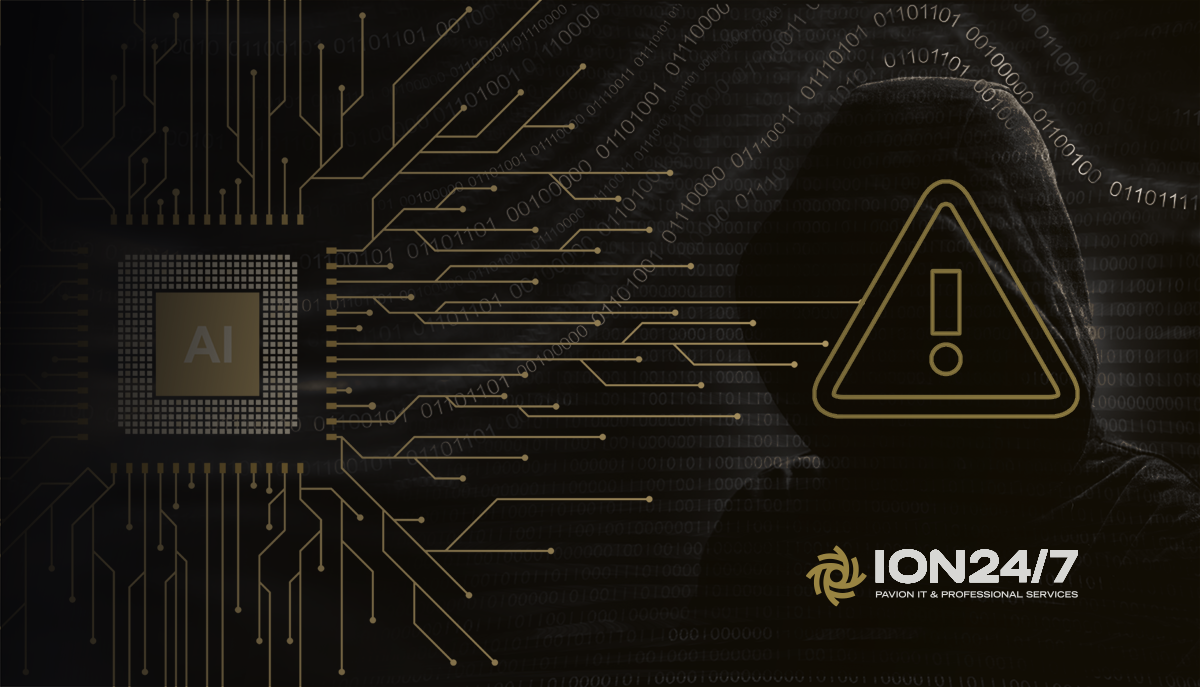
Leveraging Analytics to Predict and Prevent Security Breaches
In an increasingly interconnected world, businesses are more vulnerable than ever to security breaches. Cyberattacks, data leaks, and other malicious activities can have devastating consequences for organizations, from financial losses to reputation damage. The question for businesses is no longer if a breach will happen but when. As a result, organizations are turning to innovative technologies to predict and prevent security breaches before they occur. One of the most powerful tools at their disposal is data analytics. Using advanced predictive analytics, businesses can identify potential threats, mitigate risks, and improve their overall security posture. Analytics can guard against financial losses and reputational damage. This approach can help secure and protect intellectual property and other proprietary data.
In this article, we’ll explore how data analytics enable businesses to foresee and counter potential security threats, highlighting the role of predictive analytics, artificial intelligence (AI), and data-driven risk management in creating a proactive approach to cybersecurity.
The Growing Importance of Security in Today’s Digital Landscape
Before diving into the technicalities of predictive analytics, it’s important to understand the growing importance of security in today’s digital environment. As businesses increasingly rely on digital platforms to store and manage sensitive data, the threat landscape has expanded exponentially. From phishing attacks to advanced persistent threats (APTs), hackers have an array of tactics at their disposal to breach organizational defenses.
This ever-evolving threat landscape makes traditional reactive security approaches—responding to breaches after they occur—insufficient. Proactive measures that can predict and mitigate risks before they materialize are becoming a necessity. That’s where data analytics comes into play.
What Are Predictive Analytics in Security?
Predictive analytics is the process of using historical data, statistical algorithms, and machine learning techniques to identify the likelihood of future outcomes. In the context of security, predictive analytics aims to forecast potential security breaches by analyzing patterns and behaviors that may indicate an impending attack.
By continuously collecting data from various sources—such as network traffic, user behaviors, and system vulnerabilities—predictive analytics tools can detect anomalies and signs of potential threats in real-time. For example, they can identify unusual patterns in network traffic, such as an employee accessing sensitive files they typically don’t interact with or a sudden surge in login attempts from foreign IP addresses. Andrew Bazemore, Cyber Security Consultant at ION247, a Pavion company, stated, “by monitoring user behavior over time, organizations can create a baseline of normal activity, enabling them to swiftly detect deviations that could suggest compromised accounts or insider threats.”
Predictive analytics can’t stop an attack outright, but it can alert businesses to potential threats, giving them time to respond before an attack fully unfolds.
How Can Analytics Predict Security Breaches?
Analytics can predict security breaches by analyzing large volumes of data from different sources, detecting patterns, and flagging anomalies that may signal a threat. The power of analytics lies in its ability to sift through massive amounts of data quickly and efficiently, looking for trends that would be too complex for humans to identify manually. Below are a few ways analytics can predict security breaches:
- Behavioral Analytics
By analyzing user behavior, businesses can create baselines of what constitutes normal activity for individual users, devices, and systems. Any significant deviations from this baseline—such as logging in at odd hours or accessing sensitive files without prior authorization—can be flagged as potential security threats. This method helps identify insider threats, which are often difficult to detect using traditional security measures. - Threat Intelligence
Analytics tools can aggregate data from external threat intelligence sources, such as known hacker forums, dark web activity, and malware databases. By analyzing this data, businesses can stay informed of emerging threats and predict potential attack vectors. Predictive models can then be used to prioritize which vulnerabilities are most likely to be exploited, allowing businesses to address them before they are targeted. - Anomaly Detection
One of the key techniques in predictive analytics is anomaly detection. This involves setting up thresholds for normal system activity, such as file access patterns, login frequencies, or communication protocols. When system behaviors deviate significantly from these thresholds, the system can flag the anomaly as a potential threat. Machine learning algorithms continuously refine these thresholds, improving their predictive accuracy over time. - Machine Learning Models
Machine learning (ML) models can be trained to recognize complex patterns in data. Over time, these models learn from historical data and become increasingly proficient at predicting security breaches. For example, an ML model might analyze network traffic patterns and learn to identify subtle changes that precede a Distributed Denial-of-Service (DDoS) attack. By identifying these changes early, businesses can take preemptive action, such as blocking certain IP addresses or increasing network capacity to mitigate the attack.
What Role Does AI Play in Security Analytics?
Artificial intelligence (AI) is transforming security analytics by enhancing the capabilities of traditional predictive analytics. While predictive analytics relies heavily on historical data and statistical algorithms, AI can take things a step further by incorporating deeper learning models and neural networks.
AI systems can process vast amounts of unstructured data, such as log files, emails, and web traffic, to detect hidden threats that might go unnoticed by conventional systems. Additionally, AI can improve response times by automatically identifying and prioritizing security risks, ensuring that businesses address the most pressing threats first.
Some specific roles AI plays in security analytics include:
- Automating Threat Detection: AI systems can analyze patterns in real-time and automatically flag potential breaches. For example, if an AI algorithm detects an employee accessing sensitive data outside normal business hours, it can immediately raise an alert or even lock the user’s account, minimizing damage.
- Real-Time Response: AI-driven analytics tools can trigger automated responses, such as isolating a compromised network or alerting security teams to take immediate action. This can significantly reduce the time it takes to respond to potential security incidents.
- Predictive Capabilities: By utilizing advanced machine learning algorithms, AI systems can not only identify current threats but also forecast future risks based on emerging trends. This allows businesses to proactively bolster their defenses before a breach occurs.
Can Analytics Improve Threat Response Times?
One of the key advantages of data analytics is its ability to drastically improve threat response times. Traditional security measures, such as firewalls and antivirus software, can be slow to react to new or evolving threats. This delay can give attackers valuable time to breach systems and cause damage.
With predictive analytics, businesses can cut down on this response time by detecting potential threats before they become critical. By continuously monitoring data for signs of suspicious activity, businesses can respond in real-time, sometimes even preventing a breach from happening at all.
For example, if an analytics system identifies a pattern consistent with a phishing attempt, it can instantly alert the security team or even automatically block the malicious emails from being delivered to employees. The faster businesses can detect and respond to potential threats, the lower the likelihood of a successful breach.
How Effective Is Data in Preventing Breaches?
Data analytics is incredibly effective in preventing breaches, but its success depends on the quality of the data being analyzed, the tools used to process that data, and the ability of the security team to act on the insights provided. While no system can guarantee 100% protection from cyberattacks, data analytics provides a proactive defense against threats.
By combining real-time threat detection, anomaly detection, predictive analytics, and AI, businesses can significantly reduce their vulnerability to attacks. Predictive analytics tools continuously evolve, learning from past incidents and adapting to new security threats. This ongoing process helps businesses stay ahead of emerging attack vectors.
However, it’s important to note that data analytics is not a replacement for a comprehensive security strategy. Businesses must still implement best practices such as strong password policies, regular software updates, employee training, and multi-factor authentication. Analytics tools, when integrated into a broader cybersecurity framework, can enhance the effectiveness of these measures and improve overall security.

Data-Driven Risk Management: A Game Changer
One of the biggest shifts in modern security is the adoption of data-driven risk management. With the help of data analytics, businesses can better understand their risk landscape, identify potential vulnerabilities, and take proactive measures to mitigate threats. Predictive risk analytics empowers businesses to assess the probability of different risks occurring and allocate resources accordingly.
For instance, by analyzing data from previous breaches or cybersecurity incidents, businesses can prioritize the risks that are most likely to impact their operations. This risk-based approach ensures that resources are focused on areas of greatest concern, whether that means strengthening network defenses, patching software vulnerabilities, or conducting employee training on phishing threats.
In essence, data-driven risk management helps businesses to make informed, evidence-based decisions about their security strategies, reducing the chance of costly security breaches.
Learn How Data Can Secure Your Business!
Data analytics is revolutionizing how businesses approach security. By leveraging predictive risk analytics, AI, and machine learning, businesses can foresee potential security breaches before they occur, significantly reducing the likelihood of devastating attacks. As the threat landscape continues to evolve, the need for data-driven security strategies will only grow. To ensure your business remains secure, it’s essential to embrace the power of data analytics and take proactive steps toward risk management.
Andrew Bazemore, Cyber Security Consultant at ION247, a Pavion company, stated, “Organizations can improve their analytics capabilities by incorporating threat intelligence from external sources, helping them understand emerging threats and adapt their security strategies accordingly. By leveraging strong analytic approaches, organizations can develop a more responsive and proactive security posture, ultimately minimizing the risk of data breaches.”
Learn how data can secure your business and empower your organization to predict, prevent, and respond to security breaches faster and more effectively than ever before.

